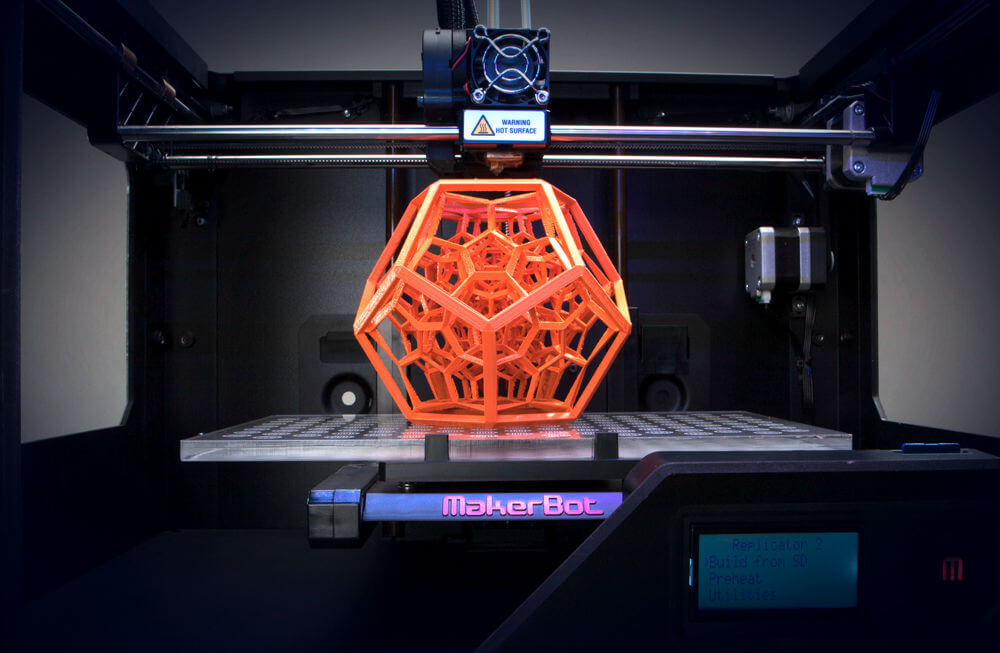Gartner: Worldwide Shipments of 3D Printers to Grow 108 Percent in 2016

Market-research firm Gartner reports that worldwide shipments of 3D printers will reach 455,772 units in 2016, which is more than double the 219,168 units shipped in 2015, according to Gartner’s latest market forecast. Despite slowing growth rates after the market’s initial growth spurt, the increase in 3D-printer shipments over the next four years will see the number of units shipped in 2020 total more than 6.7 million. The firm also forecasts that enterprise-level 3D printer shipments will grow 44 percent in 2016
Pete Basiliere, research vice president at Gartner, commented: “Once a niche market, 3D printing has continued its rapid transformation into a broad-based mainstream technology embraced by consumers and enterprises around the world. The evolution of hardware and software along with an ever-expanding collection of usable materials has driven growth in both the consumer and enterprise 3D-printing markets.”
3D printing is now experiencing widespread acceptance beyond its application in specialist industries, according to Gartner. Today, 3D printing is being used to create prototypes, augment manufacturing processes, and produce finished products. Industries in a broad range employ 3D printing “to a modest extent.” Gartner expects wider and more diverse growth to continue as new technology providers and processes emerge.
Seven technologies constitute the current 3D printer market, with material-extrusion forecast to lead the market through 2020, largely due to the low cost of entry-level material-extrusion printers. Stereolithography printer shipments will also grow at a “rapid rate” as new providers enter the market and the range of printable materials expands.
“The primary market driver for consumer 3D printers costing under $2,500 is the acquisition of low-cost devices by educational institutions and enterprise engineering, marketing and creative departments,” said Gartner’s Basiliere. “3D printers are being utilized for several applications and subjects by students in secondary and post-secondary schools where the use of 3D printers can prepare students for many career paths, such as engineering, manufacturing, aerospace, and robotics.”
The primary enterprise 3D printer market drivers are the part quality, material advances, and the devices’ ability to make prototypes, tools, fixtures, and finished goods. Prototyping will remain the primary enterprise use for 3D printers throughout the forecast period, while their use to augment manufacturing will grow to 75 percent of enterprises by 2020, according to Gartner. By this time, nearly 65 percent of discrete manufacturers that expect to use 3D printers will be using them to produce components of the products they sell or service.
“Aircraft and aerospace manufacturers have been taking this approach for years, using 3D printers to produce low-volume parts and small lots of parts with complex designs,” said Basiliere. “Military organizations, whose equipment often has very long lives, are working with defense contractors to evaluate 3D printing of replacement and modified components on shore and at sea.”
From a regional perspective, North America and Western Europe will continue to experience “very strong growth in the 3D-printer market in 2016.” However, Gartner says their shipment-growth rates will continue trailing several regions worldwide. Gartner predicts that the Greater China, emerging Asia/Pacific, and mature Asia/Pacific regions will experience a combination of high 3D-printer shipments and high growth rates through 2020. This growth will be driven by private-sector and public-sector organizations that recognize the threat that 3D printing poses to native industries that rely on conventional manufacturing technologies.
Gartner clients can read more in Gartner’s report, “Forecast: 3D Printers, Worldwide, 2016.”
More Resources
- August 2016: IDC: 3D-Printing Market Global Revenues to Reach $35.4 Billion in 2020
- June 2016: HP: What Sets Our 3D Printers Apart from Competitors – Speed, Strength, and More
- June 2016: IDC: U.S. 3D-Printer Shipments Up Nearly 20 Percent in 2015
- May 2016: Ricoh’s First 3D Printer Now Available in Europe
- May 2016: XYZprinting to Preview 3D Printer that Uses Memjet Print-Head Technology
- May 2016: 3D-Printer Maker Stratasys Teams Up with Fuji Xerox to Expand Reach in Australia
- May 2016: UAE Government, Now ‘Paperless,’ Promises that 25 Percent of New Dubai Construction Will Be 3D-Printed by 2030
- April 2016: 3D-Printing Market to Hit $30.19 Billion by 2022 According to MarketsandMarkets Report
- April 2016: 3D-Printer Industry Soars to $5.2 Billion in 2015, According to Latest Wohlers Report
- April 2016: Stratasys’ New Multi-Material J750 3D Printer Sets the Bar for Most Realistic 3D-Printed Objects
- March 2016: IDC: Foreign Brands Dominate China’s 3D-Printer Market, but China Desktop Brands Making Some Gains
- March 2016: Y Soft’s be3D is First Desktop 3D Printer that Can be Manged with Y Soft’s SafeQ Print-Management Solution
- March 2016: Top 3D-Printer Brands Moving Away from Consumer 3D Printing
- March 2016: Kodak and Carbon 3D to Jointly Develop 3D-Printing Technology
- February 2016: Sindoh Enters 3D-Printer Market with 3DWox, Which Features Internal Monitoring Camera
- January 2016: IDC: Global Spending on 3D Printing Will Grow at 27 Percent CAGR

You must be logged in to post a comment.